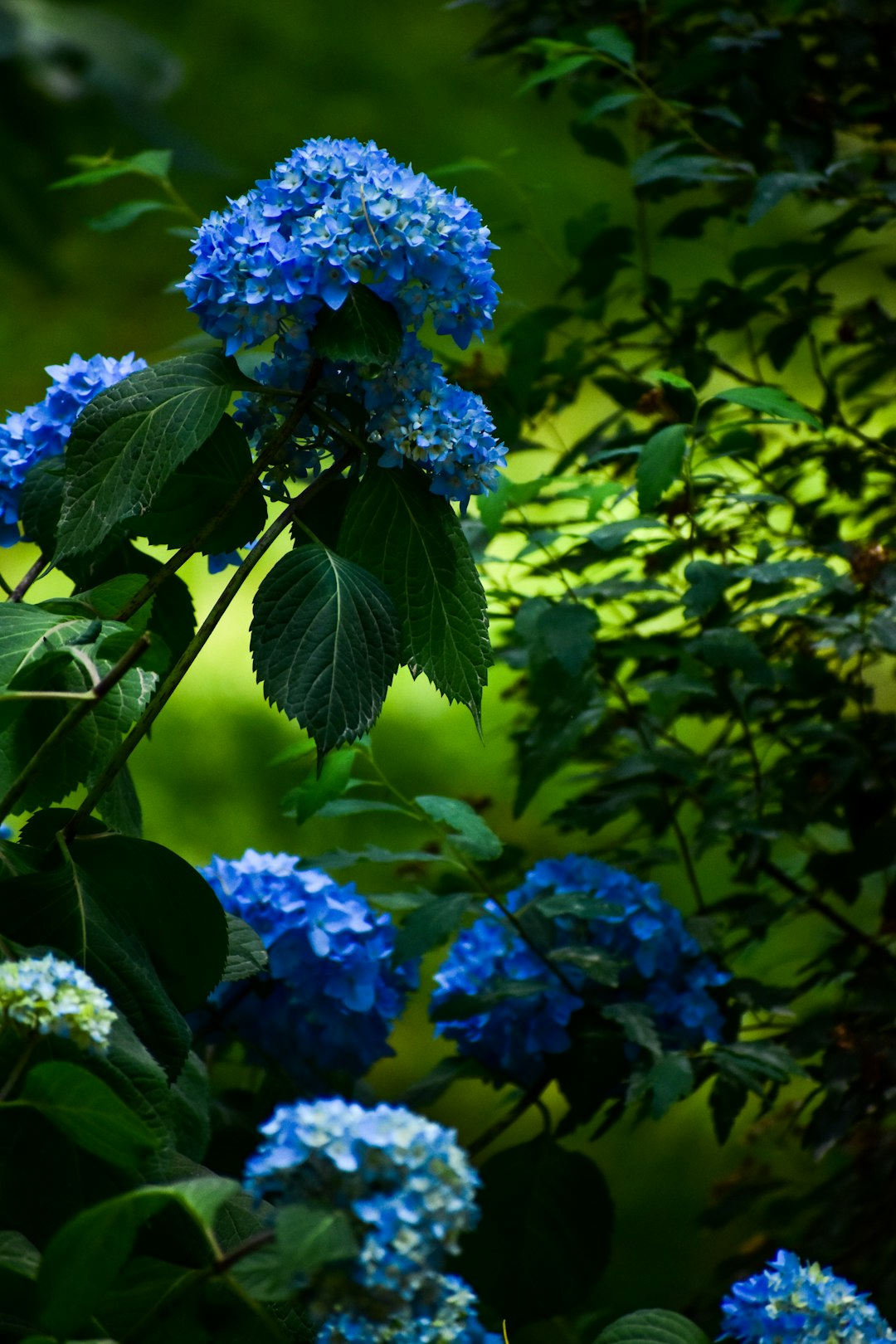Transform Your Garden with the Serenity of Blue Blooms

When it comes to creating a captivating garden, the choice of plants plays a pivotal role. Among the vast array of colors available in the floral world, blue stands out as a symbol of tranquility and coolness. From annuals to shrubs, plants with blue flowers can add a unique and calming splash of color to your landscape, elevating your garden design to new heights.
Annuals are a great choice for those looking to add a pop of color to their garden on a yearly basis. They offer a wide range of blue hues, from the soft pastels to the deep, rich blues. One of the most popular annuals with blue flowers is the Lobelia. Lobelia erinus, in particular, is known for its delicate, trailing blue blossoms that spill over the edges of containers or fill in gaps in flower beds. Its compact growth habit makes it ideal for borders, rock gardens, or as a ground cover. Another excellent annual is the Ageratum. With its fluffy, powder - blue flower heads, Ageratum adds a touch of whimsy to any garden. It thrives in full sun to partial shade and is relatively low - maintenance, making it a favorite among novice and experienced gardeners alike.
Petunias are also a staple in many gardens, and there are several blue varieties available. The Wave petunias, for example, come in a beautiful shade of blue that spreads and cascades, creating a sea of color. They are heat - tolerant and bloom profusely throughout the summer, providing continuous visual interest. Blue salvia is yet another annual that deserves a spot in your garden. Its tall, spiky blue flowers attract pollinators such as bees and butterflies, adding life and movement to your landscape. Salvia farinacea, with its deep blue flower spikes, is a classic choice that can be used as a focal point or in mass plantings.
Perennials, on the other hand, come back year after year, providing long - term beauty to your garden. Delphiniums are a well - known perennial with tall, stately blue flower spikes. They add a sense of grandeur and elegance to any garden setting. However, they do require some care, such as staking to support their tall stems and protection from strong winds. Another perennial favorite is the Campanula, or bellflower. Its bell - shaped blue flowers dangle gracefully from slender stems, creating a charming and romantic look. Campanula species like Campanula glomerata and Campanula carpatica are easy to grow and can be used in borders, rock gardens, or cottage gardens.
For those looking to add some structure and height to their garden, shrubs with blue flowers are an excellent option. The Ceanothus, also known as California lilac, is a beautiful evergreen shrub that produces masses of blue flowers in the spring. Its dense foliage and vibrant blue blooms make it a great choice for hedges, screens, or as a specimen plant. Hydrangeas are another popular shrub, and some varieties, such as the blue - flowering Hydrangea macrophylla, can add a splash of color to your garden. The color of the hydrangea flowers can be influenced by the soil pH, with more acidic soils producing bluer flowers.
When designing your garden with blue - flowered plants, it's important to consider the overall color scheme and the placement of the plants. Blue pairs well with many other colors, such as yellow, white, and pink. For example, combining blue salvia with yellow marigolds or white petunias can create a striking contrast. You can also use different textures and heights to add depth and interest to your garden. Tall delphiniums in the back, medium - sized campanulas in the middle, and low - growing lobelias in the front can create a multi - dimensional look.
In addition to their aesthetic appeal, blue - flowered plants can also have a therapeutic effect. The color blue is known to have a calming influence on the mind and body, making your garden a peaceful retreat. Whether you're sitting on a bench enjoying the view or working in the garden, the sight of these beautiful blue blooms can help reduce stress and promote relaxation.
To ensure the health and vitality of your blue - flowered plants, proper care is essential. Most annuals and perennials prefer well - drained soil and regular watering, especially during dry periods. Shrubs may require more pruning and fertilizing to maintain their shape and encourage healthy growth. By following these simple care tips, you can enjoy the beauty of blue - flowered plants in your garden for years to come.
In conclusion, incorporating plants with blue flowers into your garden design is a wonderful way to add a touch of serenity and color. Whether you choose annuals for a temporary burst of color or perennials and shrubs for long - term beauty, there are countless options available to suit your taste and garden style. So, go ahead and transform your garden into a haven of tranquility with the cool, calming allure of blue blooms.